As usual, our day began with breakfast in the Starlight Restaurant before getting off the ship in the city of Hilo on the Big Island or Hawai’i. Our excursion today was called “Volcanoes and Taste or Hawai’i,” with the main attraction being a trip to Hawai’i Volcanoes National Park to see Kilauea. This was my favorite place when we came to Hawaii over 15 years ago, and I was excited to see it again.

Our driver and guide for our small group was Deric. He is originally from Maine but has lived on the Big Island for four years.
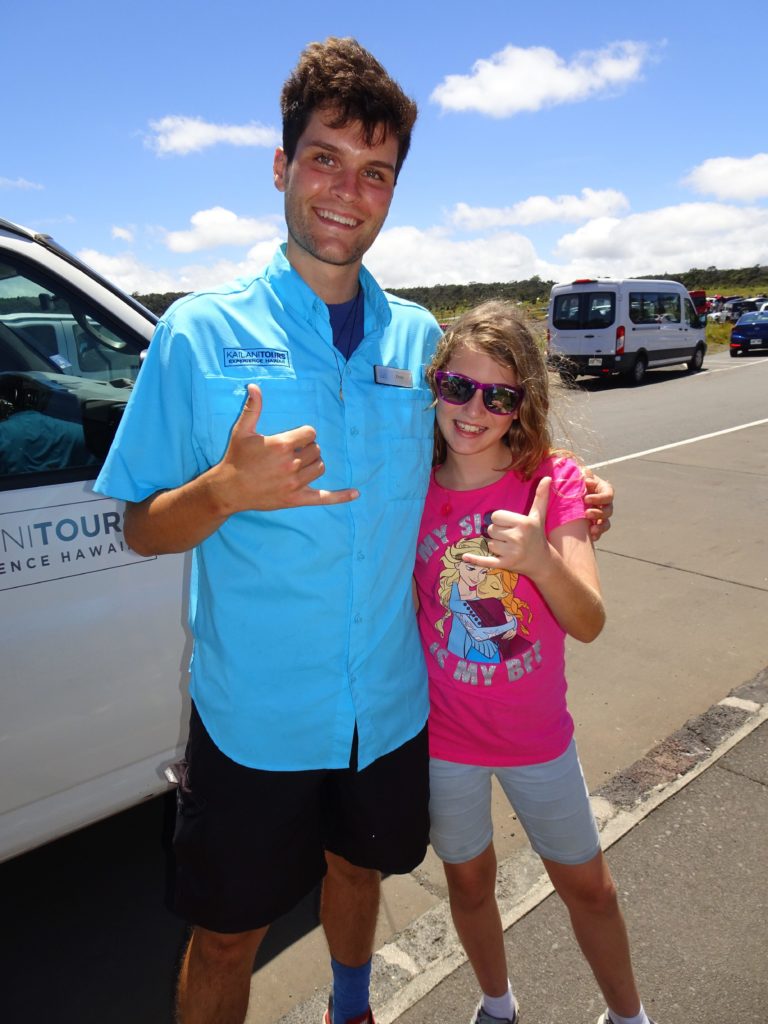
He said that he has been traveling here since he was nine because his aunt has lived here for 44 years.

We started off driving through Hilo and had an awesome view of the cloudless peak of Moana Kea, which, at 31,796ft, is the tallest mountain in the world when measured from the bottom of the ocean. This is 2,700ft taller than Mt. Everest. However, it is only 13,796ft above sea level, which is why Everest is considered the tallest. Deric said it had been at least a month since he had been able to see the peak of the volcano, and that we were very lucky.
He explained a little more to us about the controversy and protests surrounding Moana Kea right now. Moana Kea is very sacred to the Hawaiian people, and they are upset about the plans to build a new Thirty Meter Telescope (TMT) on its summit.
Deric also told us a lot about the city of Hilo and the Big Island in general as we made our way toward our first stop about 30 minutes away. Hilo is on the eastern part of the island and does not draw as many tourists as Kona on the western side. For this reason, there are only four hotels in Hilo. Hilo is the second largest city in Hawaii with 45,000 people (first is Honolulu with over 700,000), and is the wettest city in the world with an average of 150 inches of rain per year. 60 inches fall within a three-month period during the rainy season.
The Big Island earns its name because it is big enough to fit all of the other Hawaiian islands and have room to spare. The population of island is around 200,000 today, though it was around two million when Captain Cook first arrived at big island. Disease killed up to 1 million people. Related to Captain Cook, he also explained how the story of Peter Pan is roughly tied to the story of Captain Cook, and it was kinda creepy.
There are five volcanoes on the Big Island, and today we were able to see three of them. Moana Kea (tallest volcano in the world), Moana Loa (largest active volcano in the world that is comprised of 10,000 cubic miles of iron-hard lava), and Kilauea (the most active volcano in the world). On a related note, the Big Island is the hub of volcanology for the world and in 2017 they officially eliminated the idea of dormancy. This has been replaced by two categories: (1) Active (2) Extinct – Active means it has had lava on the surface in the last 10,000 years. The three volcanoes mentioned above are all in this category, though Moana Kea and Moana Lea do not have any current eruptions.
He explained that the Big Island is the only Hawaiian Island to still be growing, and that around 800 square miles of land in were added in the 2018 massive eruption on Kilauea. This means that the Big Island has the youngest land on the planet and some of the most fertile soil on earth. Because of this, 90% of plant life is invasive.

The most invasive is the African Albizia, which grows 25’ every two years. They are currently poisoning them on the island to trey and eliminate the spread. We were able to see an African Albizia “tree graveyard” as we drove south.

Our first stop was the Hilo Coffee Mill in Mountain View. At the mill, we went into the roasting room and had a briefing from Jeanette, who is one of the owners.
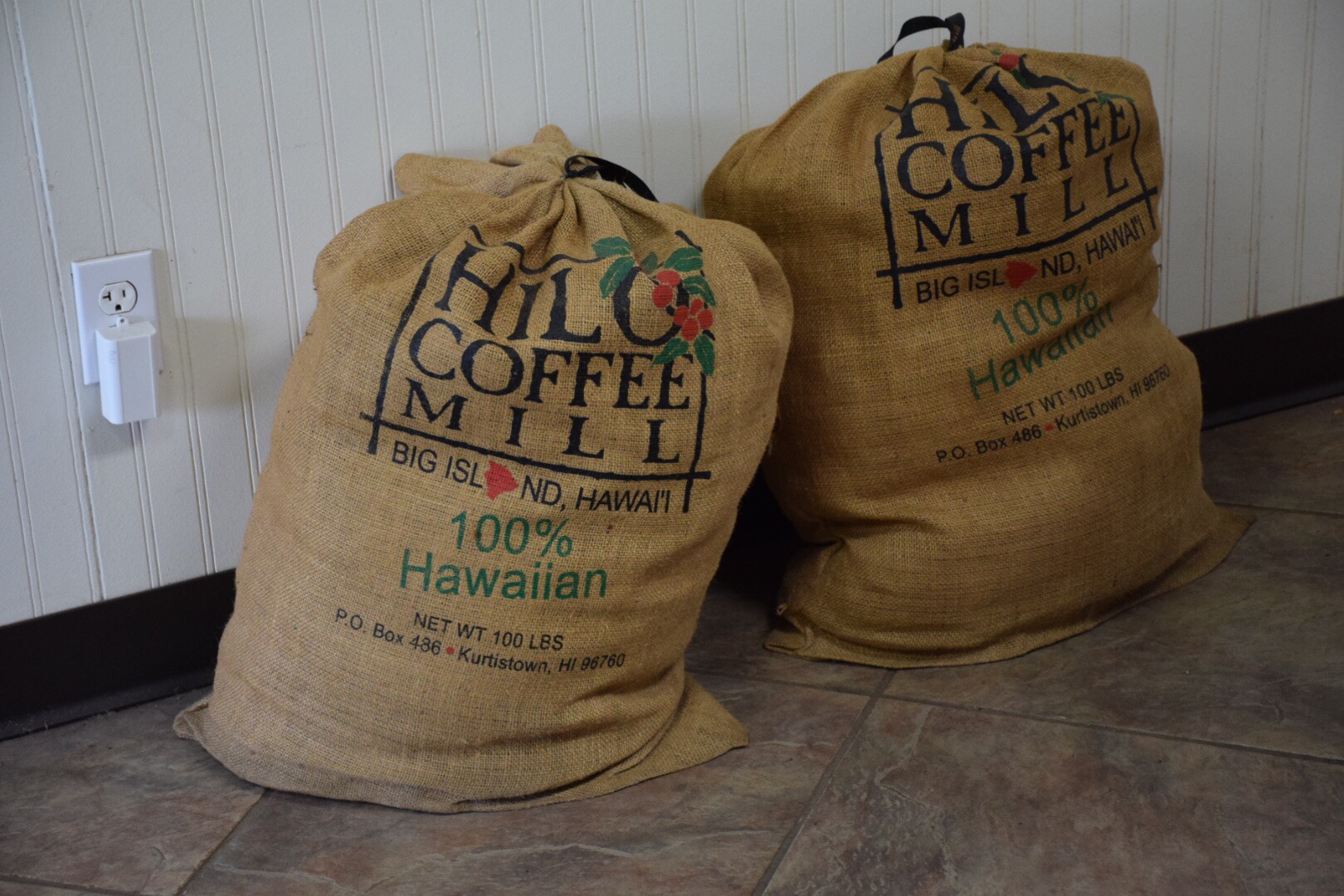
She explained that Hawaii is the only US state that grows coffee, and this is because most coffee is grown 20° north or south of equator, and Hawaii fits that criteria. She said that their business is called a “mill” because they handle the coffee all the way from seed to cup. Their property covers 24 acres, and they have 4000 coffee trees. They have a total staff of 10 people.

She explained in detail the steps to grow and process coffee. It can take up to seven years for a coffee tree to mature enough to be ready to produce. She said that they were currently sold out of their own coffee until at least December and that they also import beans from other parts of Hawaii and outside the U.S. for processing. For beans that they import, they will only buy from one estate per location, which means that it comes from a single farm.
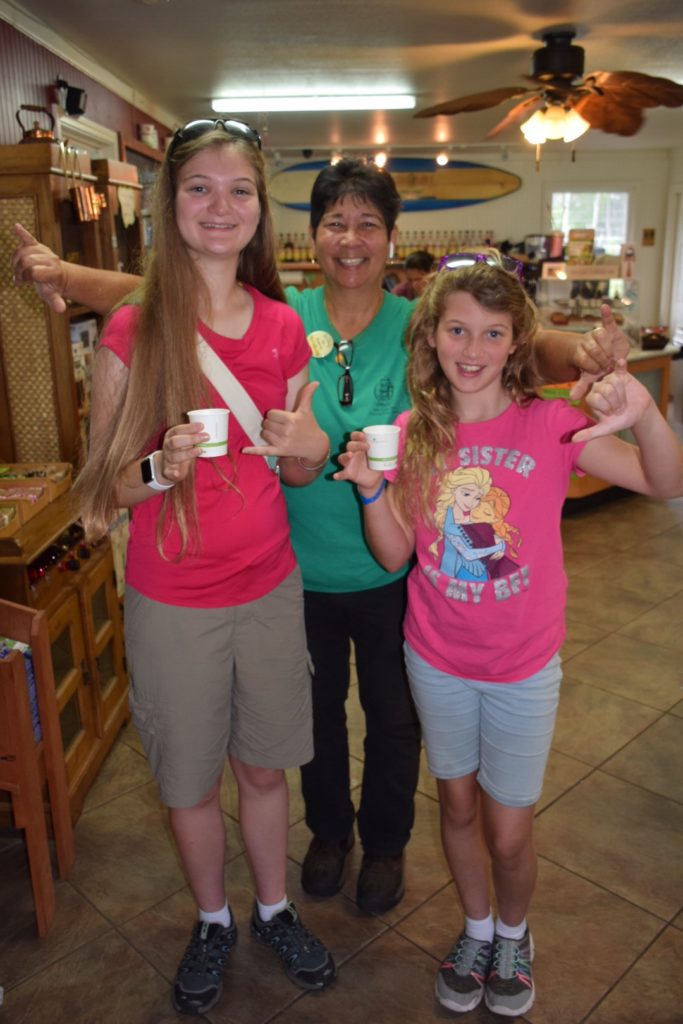
From the roasting room we went to the tasting room and had samples of three different types of coffee from Maui. This included a medium roast, dark roast, and one called “Hawaiian Fireside.” Kate and Sara actually tried the medium and Fireside, though I don’t think either was thrilled with them. Olivia and I thought the medium was the best, which was a bit of a surprise since we normally prefer dark roast. It so smooth that I decided to purchase a full cup for the road. We also had some samples of macadamia nuts.
Next we continued heading up to Hawai’i Volcanoes National Park to see Kilauea. The park was established in 1916 and covers over 333,000 acres. It is comprised of both the Kilauea and Moana Lea volcanoes. The summit of Kilauea is at 4,000ft above sea level, and unlike lower elevations, 85% of the plants and trees are endemic or native to the area.
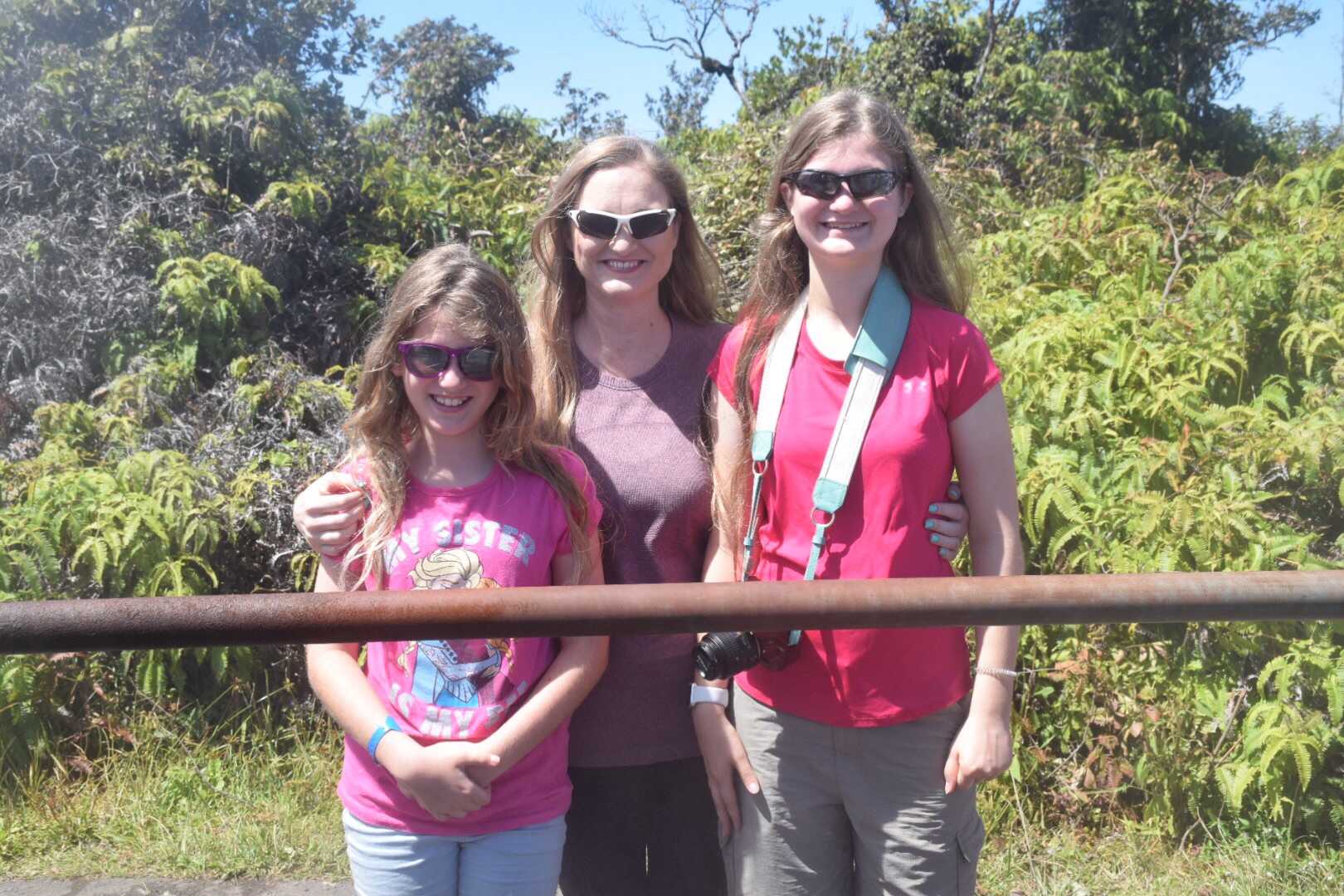
After passing through the gates, we made our way to the caldera or summit of Kilauea. At the summit we saw a number of steam vents. Deric said that most of these go down 1,600 to 1,800ft where magma heated steam is created and rises to the surface. We were able to hold our faces over the vents and feel the steam (Sara really liked this part). While they were not hot enough to burn our skin, they were hot enough enough to cause my Go Pro to overheat and shut down.

From the summit, we were also able to get an uninstructed view of Moana Loa in the distance. I heard one of the other guides say that Moana Loa is only visible from Kilauea about 30 days per year, and again we were very lucky to have a clear and dry day. It was quite a site to behold rising up 13,679ft above sea level.
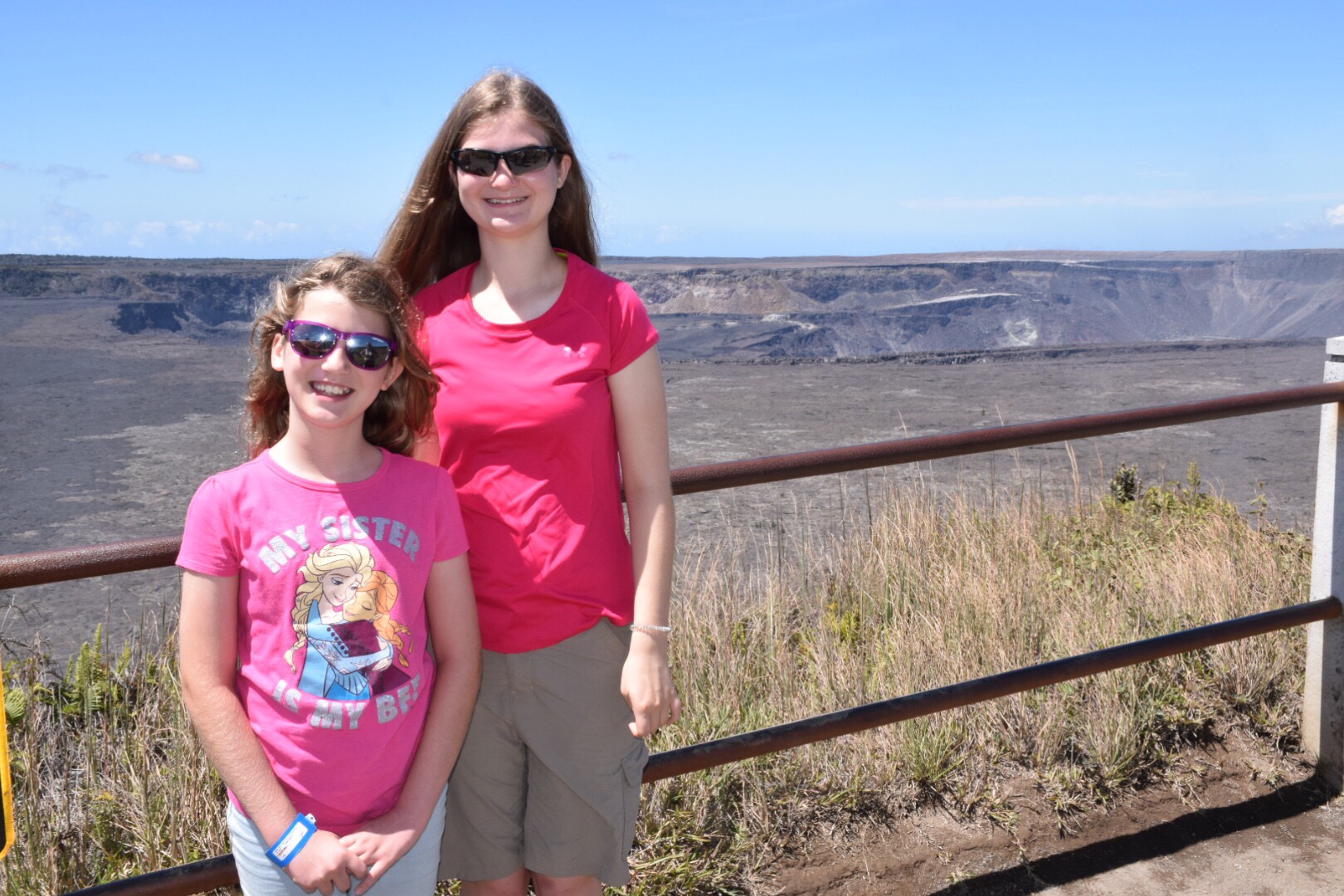
At the caldera we took a short hike to the edge of Kilauea’s crater, which has doubled in size with the eruptions in 2018 to be more than four miles wide.
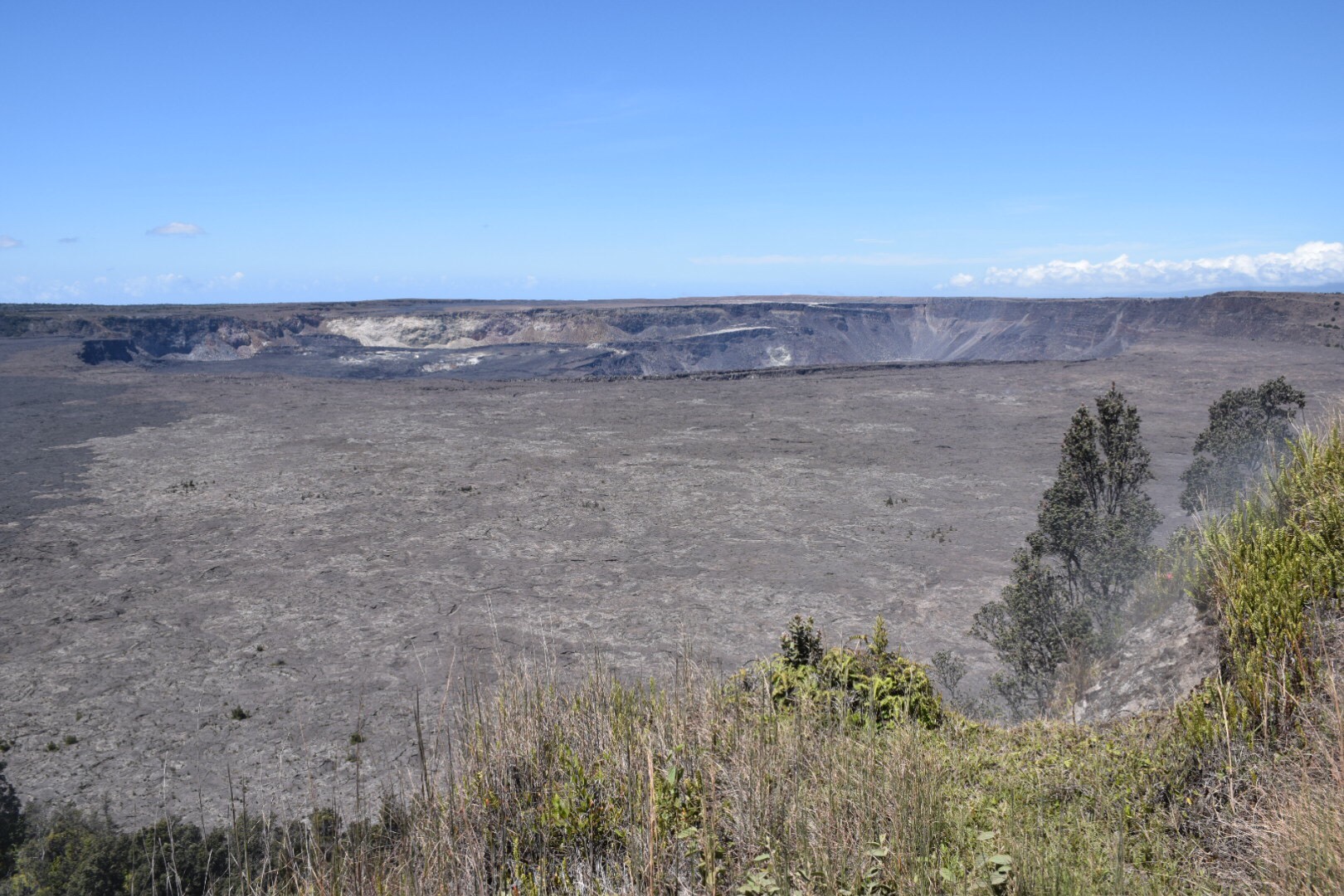
It looked a lot different than what we saw 15 years ago, but the view was still amazing. It is like looking across a volcanic desert. Also, we were able to go into the crater when we were here before, but it has been closed since these latest eruptions.
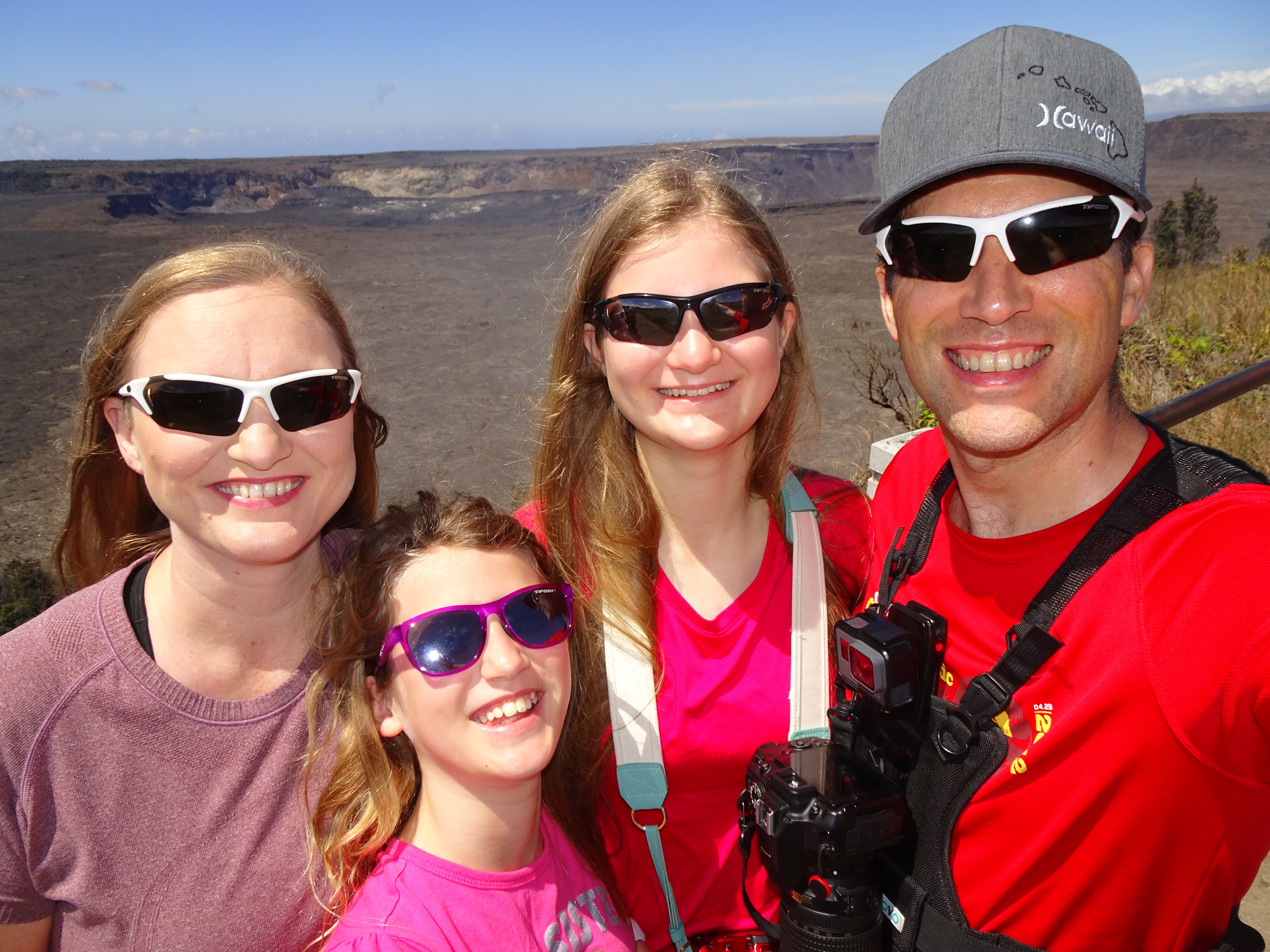
Deric explained that Kilauea is an example of a “shield volcano,” because the dome is like a warrior shield laid down on top. Eruptions on these types of volcanoes do not have a pyroclastic explosion but are characterized by lava slowly oozing out.
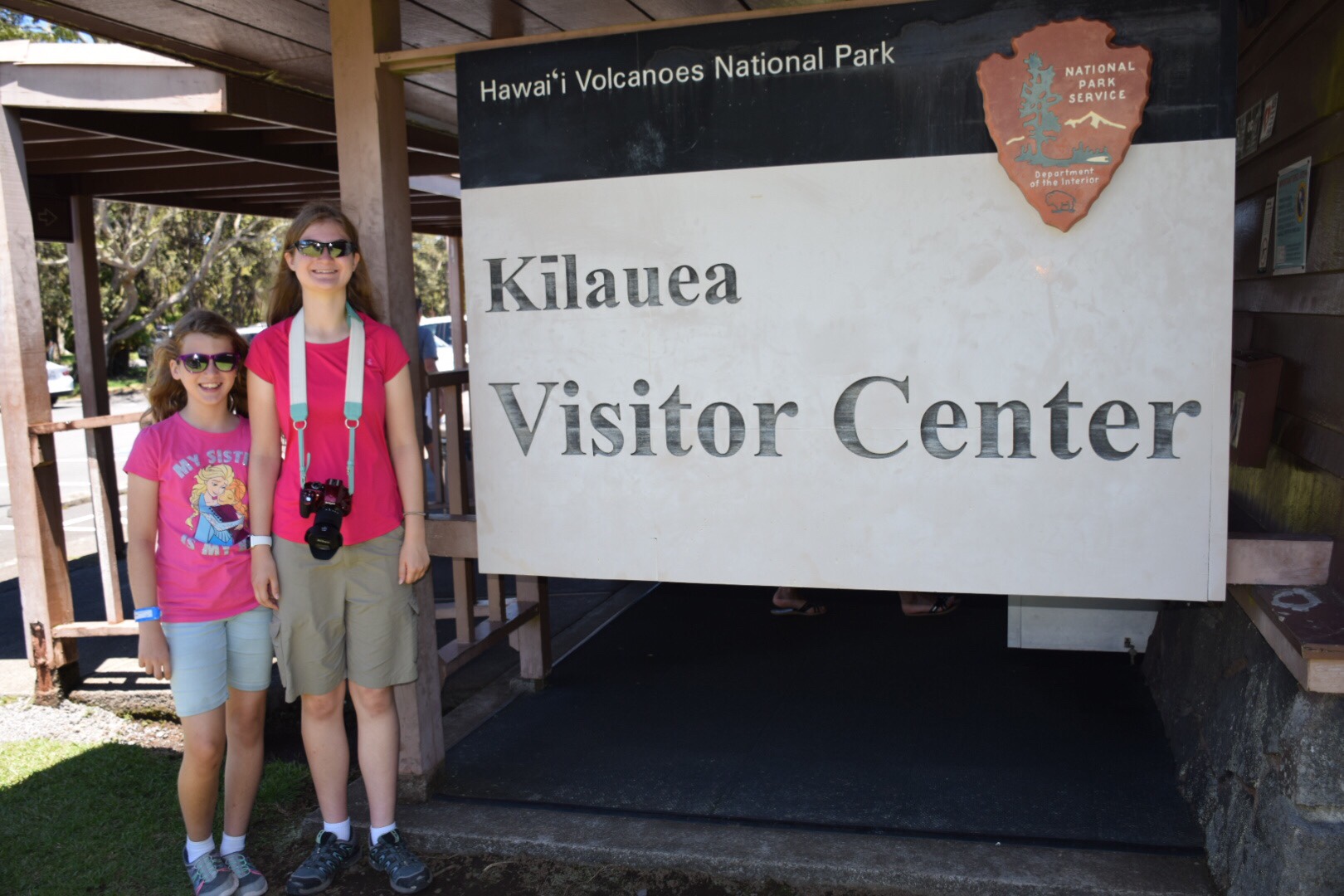
From the caldera we drove back down to the Kilauea Visitor Center. The girls were able to get stamps in their National Park Passports, but unfortunately they were not able to do the Junior Ranger program due to lack of time.

I walked across the street to Volcano House where there was another viewing spot for the caldera and crater.
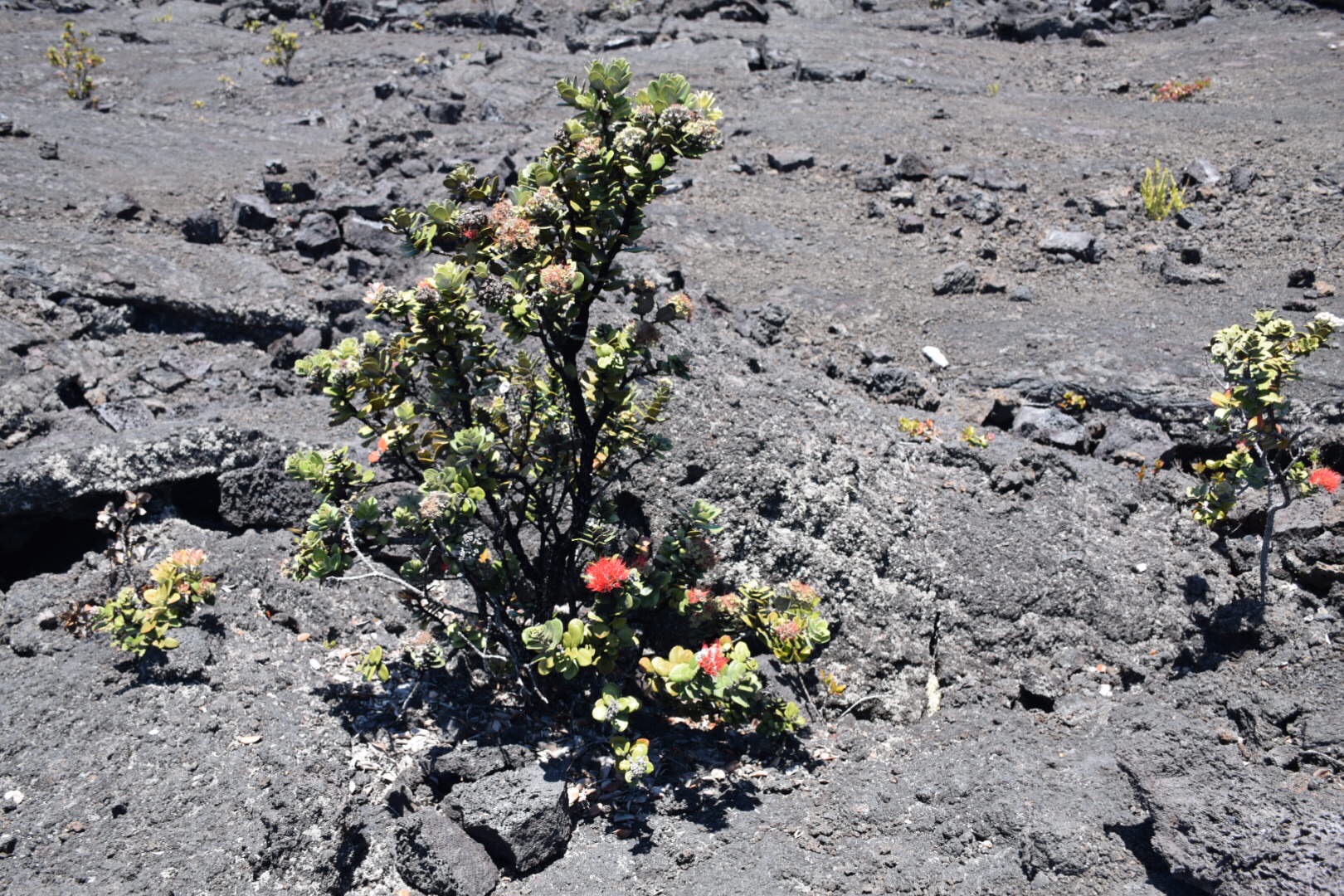
On the drive to the next spot in the park, Deric told us about the ‘ohi’a tree that is found growing out of the lava throughout Kilauea and is adorned by the red lehua flower. He shared with us the legend behind the tree that involved a spurned Pele turning the man ‘Ohi’a into a tree. His true love Lehua was grieved and begged to be reunited with ‘Ohi’a, and she was turned into the flower. This tree and flower are now the symbol of the park. Deric explained that the ‘ohi’a tree is very strong rooted and breaks apart the top soil. Without this tree nothing else would be able to grow on Kilauea.

Our next stop was Lua Manu (bird pit) which is a lava flow from July 1974, which makes it one month older than me. We were able to walk on the lava field and go through a small lava tube.
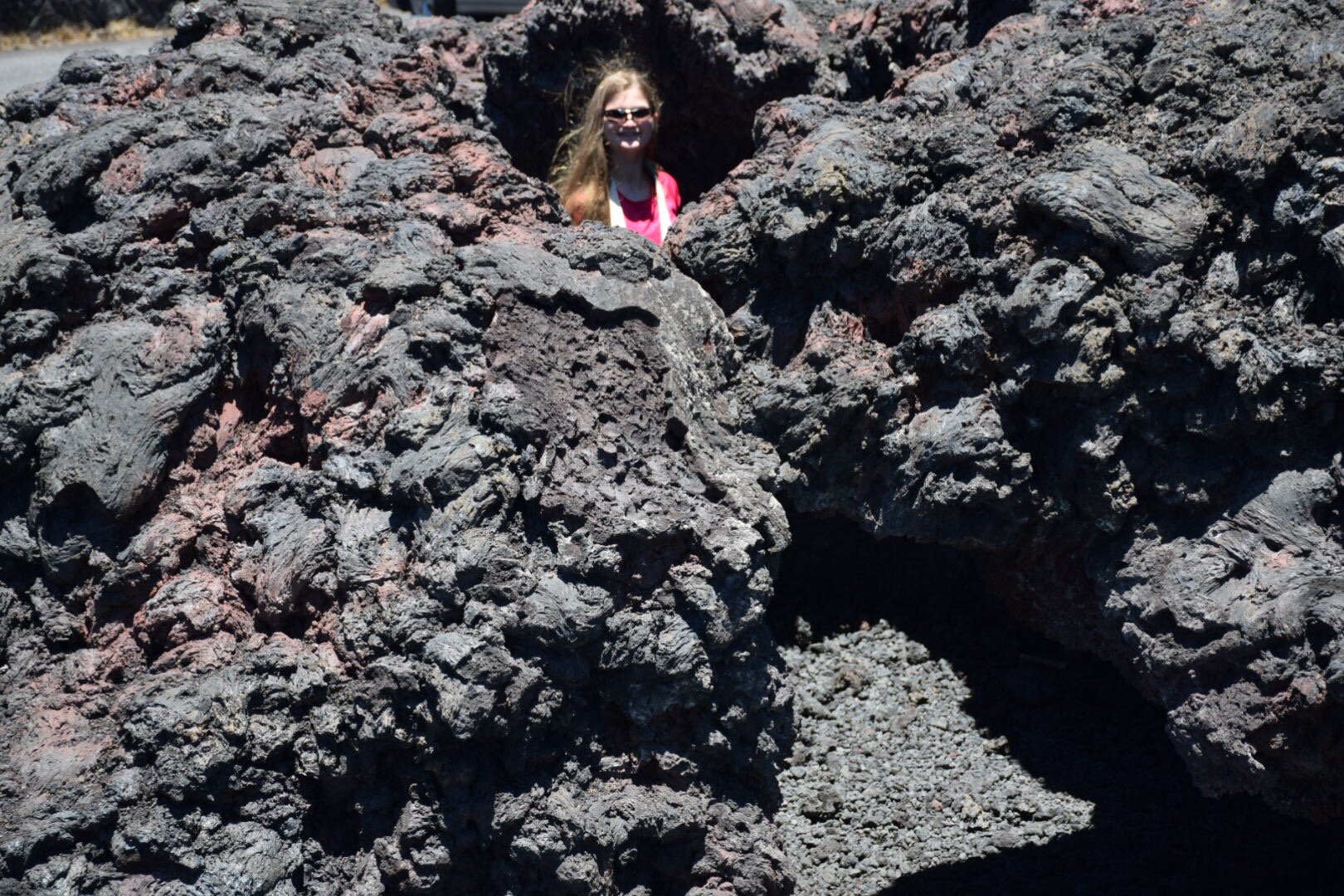
This site was awesome, and all of us agreed this was the best part of the day. We all took turns picking up large lava rocks, and it was crazy to feel how light they are.
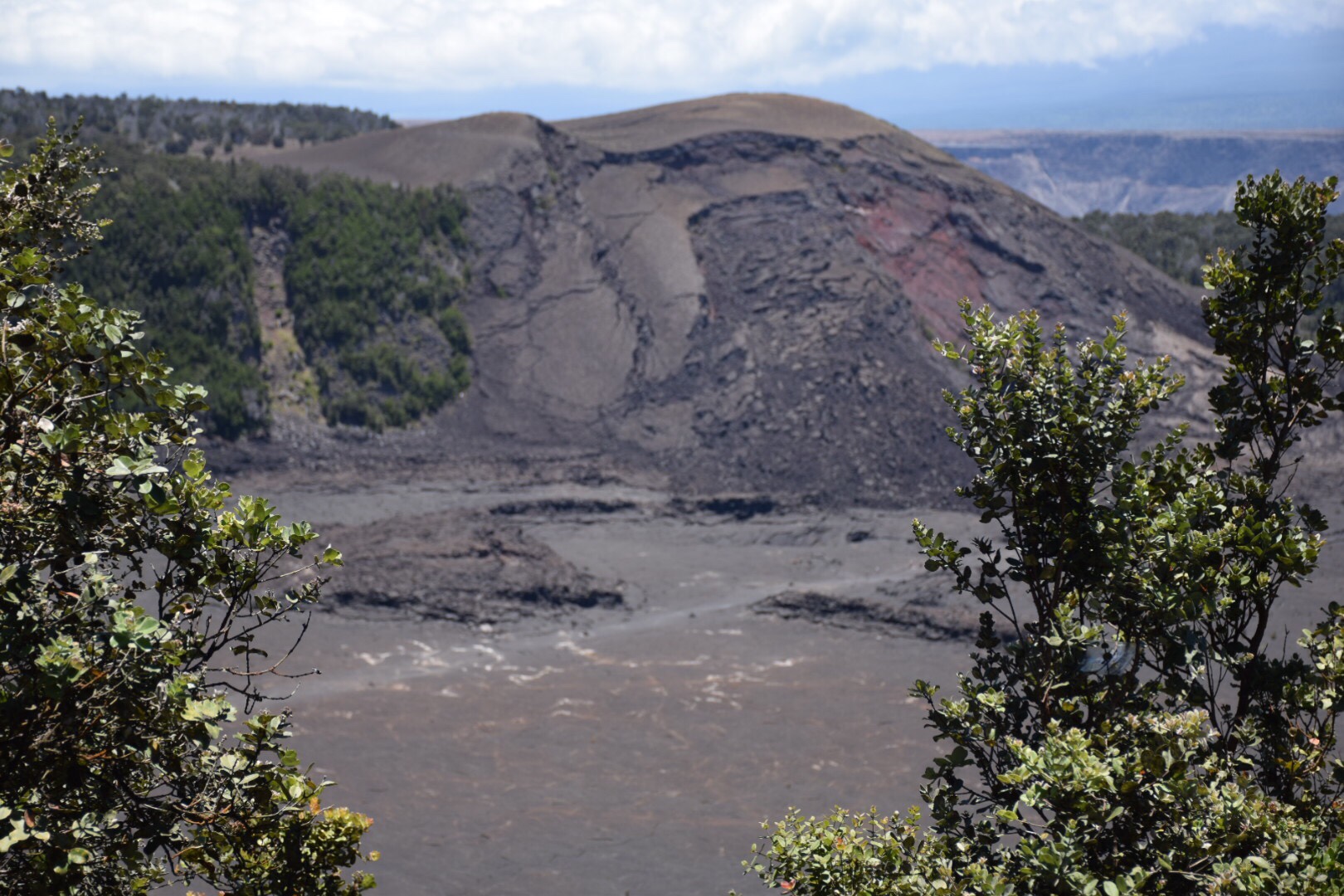
Our final stop in the park was at Kilauea Ike, which is a dried lava lake that is 400 feet thick. This was the result of an eruption in 1959 with a lava fountain fountain that was 1,600ft tall. The remains of the fountain can be seen today in a massive cinder cone that sits in the middle of the lake. Deric said that there is a hiking trail that goes from the lookout point to the bottom of the lake and it is one of the most popular trails in the park.
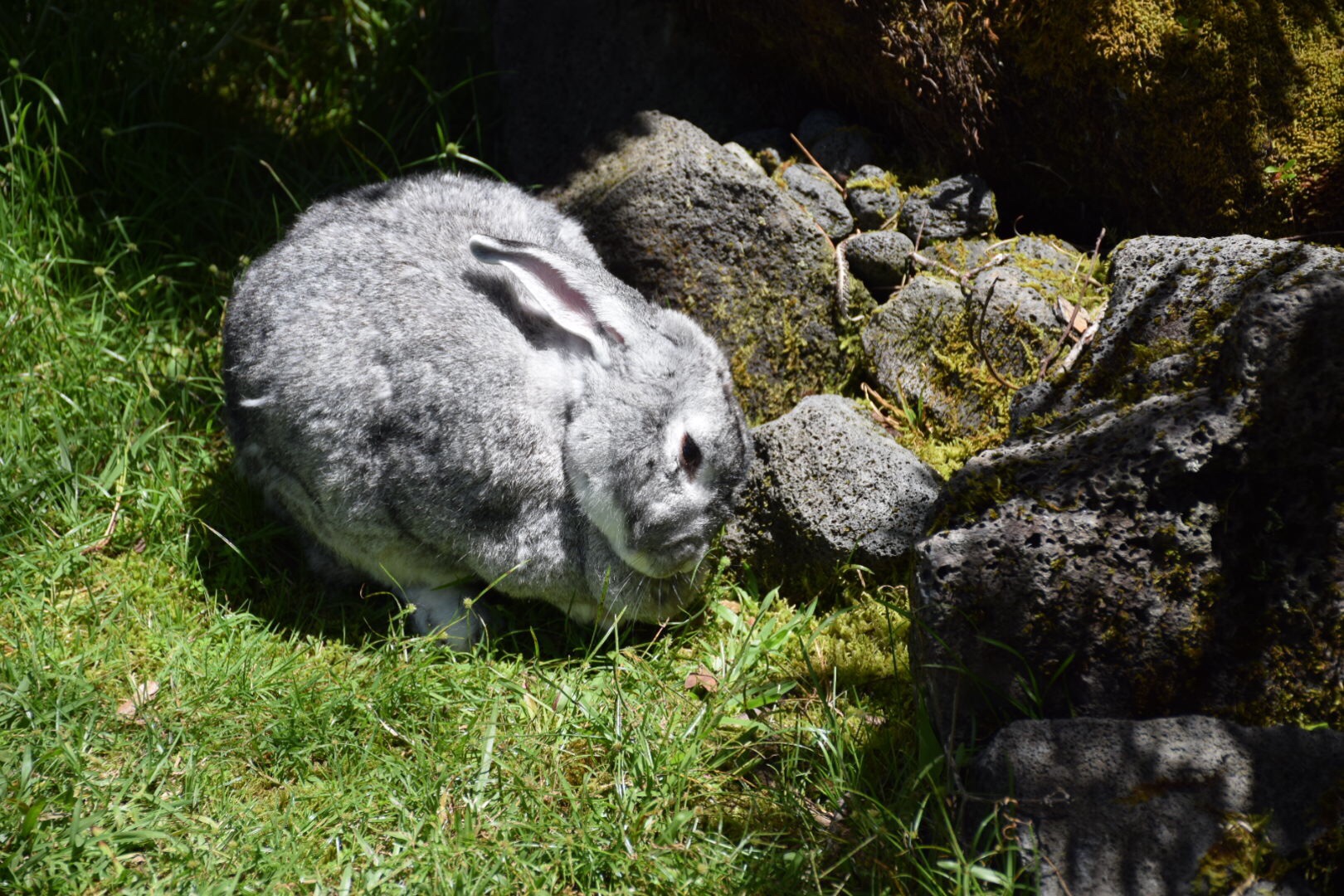
We left the park and had lunch at a place called Volcano Garden Arts located in Volcano Village. We were greeted by the owner and artist Ira Ono, who is originally from Brooklyn. The gallery is located in a 100 year old house that he purchased 15 years ago and restored. The highlight for Olivia and girls was seeing their massive pet bunny.

Our next stop was at Big Island Candies back down near Hilo at the bottom of the mountain. They are known for their shortbreads and make everything by hand. Upon arrival we got samples of the shortbread, macadamia nut crunch, and some Kona coffee. We were also able to watch some of the items being made.

The final stop was at the beautiful Rainbow Falls on the Wailuku River that flows between Moana Kea and Moana Loa. It gets its name because when the sun hits the falls in the morning, it creates a rainbow. As Deric dropped is off, he gave each of us a hug.
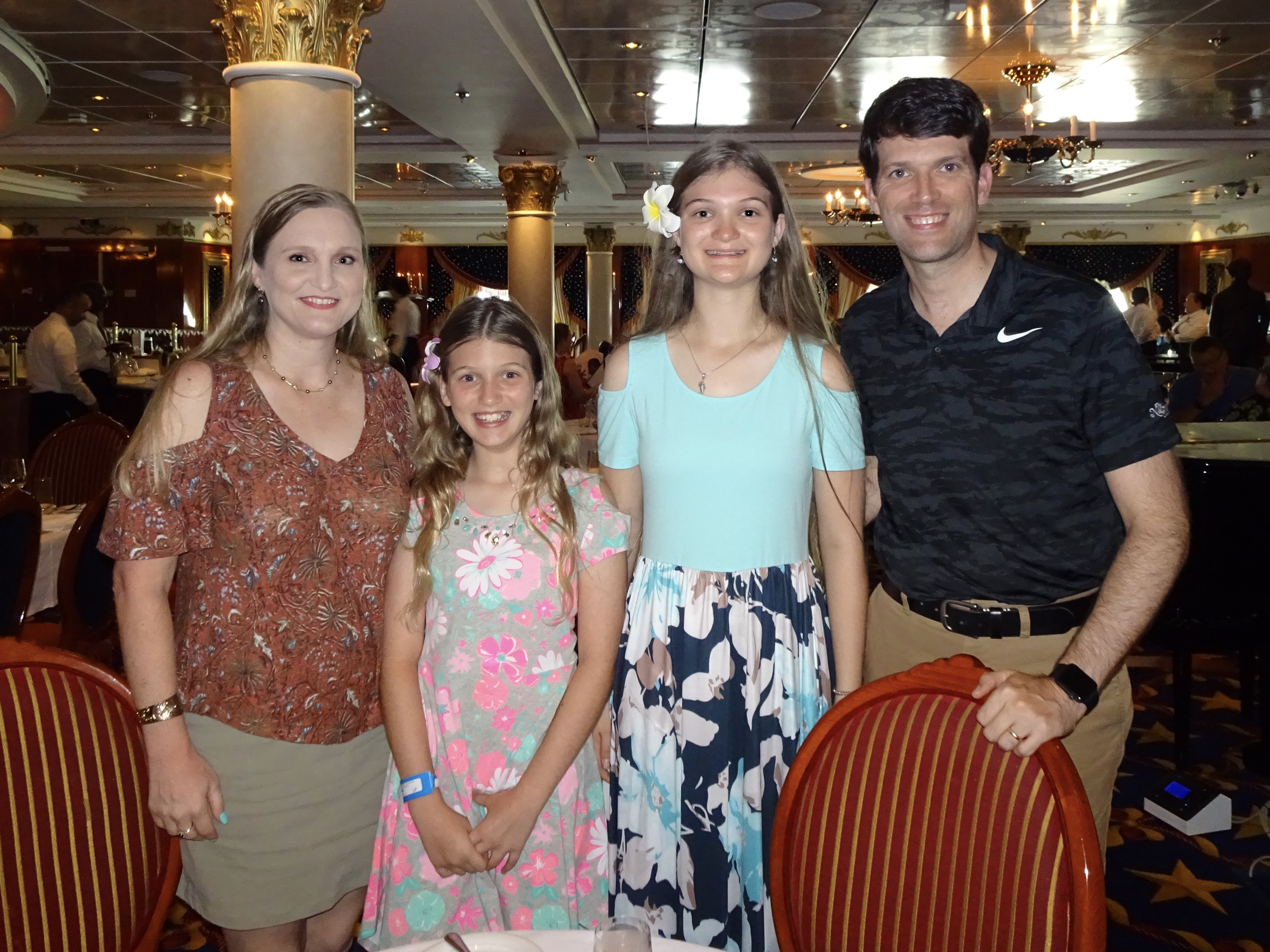
After getting back to the ship and cleaning up, we had a nice dinner in the Liberty Dining Room before dropping Sara off at the Splash Academy Kids Club for the evening. While Sara was in kids club, Olivia, Kate, and I went to see magician Jason Andrews in the Hollywood Theater. He was quite impressive.
Tomorrow the plan is to be on the western side of the island in Kona.
